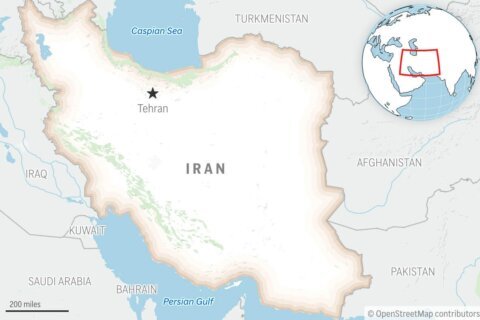You may have heard advice on social media or from friends to “just buy a Vanguard fund and hold it.” That kind of blanket recommendation lacks nuance. Without knowing which funds are truly beginner-friendly, you could inadvertently end up with a less-than-ideal choice.
Vanguard may have built its reputation on a mix of low costs and index-based strategies. But after decades of growth and 364 mutual funds and exchange-traded funds (ETFs) now on offer, not every Vanguard product is designed with beginner investors in mind.
[Sign up for stock news with our Invested newsletter.]
Take the Vanguard Market Neutral Fund Investor Shares (ticker: VMNFX), for example. It is an oddity in Vanguard’s lineup. This alternative fund aims for a “market-neutral” approach by offsetting long and short positions to maintain a beta of zero, in theory generating returns independent of market direction.
In practice, though, execution has been mixed. Over the last decade, VMNFX delivered only a 3.6% annualized return with low volatility, anemic performance that many investors could have approximated with a simple blend of equities and a money market fund at a lower cost.
VMNFX also departs from Vanguard’s usual low-cost ethos. It charges a steep 1.4% expense ratio and requires a $50,000 minimum investment, despite being marketed as “Investor Shares.” That, coupled with its complexity, makes VMNFX anything but beginner-friendly.
By contrast, the best Vanguard funds for beginners exhibit the exact opposite characteristics. They are low-cost, simple in methodology, and carry minimal or no minimum investment requirements. Fortunately, Vanguard has plenty of those to choose from.
Here are seven of the best Vanguard funds for beginner investors:
| Vanguard fund | Expense ratio |
| Vanguard 500 Index Fund Admiral Shares (VFIAX) | 0.04% |
| Vanguard Total Stock Market Index Fund Admiral Shares (VTSAX) | 0.04% |
| Vanguard Wellington Fund Investor Shares (VWELX) | 0.25% |
| Vanguard Target Retirement 2060 Fund (VTTSX) | 0.08% |
| Vanguard Extended Market ETF (VXF) | 0.05% |
| Vanguard Growth ETF (VUG) | 0.04% |
| Vanguard Value ETF (VTV) | 0.04% |
Vanguard 500 Index Fund Admiral Shares (VFIAX)
“The S&P 500 index should be a staple of every investor’s portfolio,” says Henry Yoshida, senior vice president of Retired.com. This benchmark is an excellent way to obtain U.S. core equity exposure. It comes with built-in screeners that check for size, liquidity and earnings quality. Access to the S&P 500 can be achieved via index funds like VFIAX, or its ETF equivalent the Vanguard S&P 500 ETF (VOO
).
VFIAX is very easy to understand. As a passive fund, it simply buys and holds the same stocks found in the S&P 500. This full replication approach allows it to deliver the returns of the index, less any fee drag. On that end, VFIAX is very cost effective with a 0.04% expense ratio. The ETF variant, VOO, is even cheaper with a 0.03% expense ratio. Over the last 10 years, VFIAX has returned 14.6% annualized.
Vanguard Total Stock Market Index Fund Admiral Shares (VTSAX)
“VTSAX gives you complete exposure to the entire U.S. stock market, from the ‘Magnificent Seven’ down to thousands of publicly traded small- and mid-cap stocks that could become the next Nvidia of the future,” Yoshida says. “Personally, it represents the majority of my personal investment portfolio since it is so diversified, low-cost and tax-efficient — you can buy this fund and hold it forever.”
This Vanguard fund also provides exposure to U.S. core equities, but via a different benchmark. Instead of replicating the S&P 500, VTSAX samples the CRSP US Total Market Index. This gives it exposure to over 3,000 large-, mid- and small-cap domestic equities across all 11 stock market sectors. However, it is weighted by market capitalization, so the top holdings are similar to VFIAX. VTSAX charges a 0.04% expense ratio.
Vanguard Wellington Fund Investor Shares (VWELX)
“Launched in 1929, VWELX has seen it all: the Great Depression, World War II, the intense bear market of the 1970s, the subsequent bull market of the ’80s and ’90s, the global financial crisis and the COVID-19 pandemic, just to name a few,” says Brian Miller, senior investment director on the multi-asset solutions team at Vanguard. Unlike VTSAX or VFIAX, VWELX does not passively track an index.
This fund is one of the few actively managed funds in Vanguard’s lineup. Two-thirds of the fund is dedicated to stock-picking, with an emphasis on large- and mid-cap stocks in out-of-favor sectors screened for value, quality and dividend yield. The other one-third is allocated to fixed income, with an emphasis on investment-grade corporate bonds. VWELX charges a 0.25% expense ratio.
[Read: 7 Best Data Center Stocks, ETFs and REITs to Buy Now]
Vanguard Target Retirement 2060 Fund (VTTSX)
“Vanguard’s suite of target retirement funds can be a complete portfolio solution for investors who want a simple, globally diversified portfolio that adjusts its risk profile over time,” Miller says. “Simply pick the target date closest to when you plan to retire, and the fund allocates your assets to a low-cost mix of stocks and bonds that gradually gets more conservative as you approach retirement.”
Beginner investors looking to retire around 2060 can use VTTSX as a one-ticker solution. VTTSX uses a “fund of funds” structure to wrap four other Vanguard funds covering U.S. stocks, international stocks, U.S. bonds and international bonds. Right now, the fund features roughly a 90% stocks and 10% bonds split, but will gradually de-risk as the target retirement date nears. VTTSX charges a 0.08% expense ratio.
Vanguard Extended Market ETF (VXF)
The S&P 500 may be the most recognized benchmark in the U.S., but it has some shortcomings. Its size and liquidity requirements exclude a large portion of mid- and small-cap stocks, leaving investors without exposure to thousands of companies. On top of that, it is not as purely “passive” as is often assumed. An index committee ultimately decides which companies are added or removed.
For everything left out of the S&P 500, Vanguard offers VXF. This ETF tracks the S&P Completion Index, which includes 3,400-plus stocks not found in the S&P 500. VXF can be used as a tactical tool for overweighting mid- and small-cap stocks, or for investors who want to fine-tune allocations beyond what broad-market funds like VTSAX can provide. The fund charges a low 0.05% expense ratio.
Vanguard Growth ETF (VUG)
Beginner investors looking to move beyond broad-market index funds do not need to leap straight into individual stock picking. A style-based strategy, such as targeting growth or value stocks, can be a practical first step to potentially beating the market. For exposure to growth stocks, the VUG is a good option. It tracks the CRSP US Large Cap Growth Index and charges just a 0.04% expense ratio.
VUG’s portfolio is heavily tilted toward high-flying companies with an average earnings growth rate of 30.6% and an average return on equity of 33%. That said, investors should be mindful of concentration risk. Technology makes up about 62% of the ETF, and the two largest holdings, Nvidia Corp. (NVDA) and Microsoft Corp. (MSFT), account for 12.6% and 12.2% of the fund’s weight, respectively.
Vanguard Value ETF (VTV)
Even heading into the last quarter of 2025, growth investing continues to dominate, extending a decade-long streak of outperformance fueled by expectations of rate cuts and heavy artificial intelligence spending. But contrarian investors may want to consider buying what has lagged by allocating to VTV. This ETF tracks the CRSP US Large Cap Value Index — essentially the opposite of VUG.
VTV’s portfolio shows lower earnings growth and return on equity compared to VUG, but it also trades at significantly cheaper valuations, with lower price-to-earnings and price-to-book ratios. The ETF is also less concentrated, with no single company or sector driving the fund. Instead of technology dominating, VTV’s holdings are more evenly spread, with the top three sectors being financials (23.1%), industrials (16.5%) and health care (13.5%).
[Read: 6 of the Best AI ETFs to Buy for 2025]
More from U.S. News
7 Best Long-Term ETFs to Buy and Hold
7 Dividend Stocks to Buy and Hold Forever
9 of the Best Bond ETFs to Buy for 2025
7 Best Vanguard Funds for Beginner Investors originally appeared on usnews.com
Update 09/11/25: This story was published at an earlier date and has been updated with new information.







